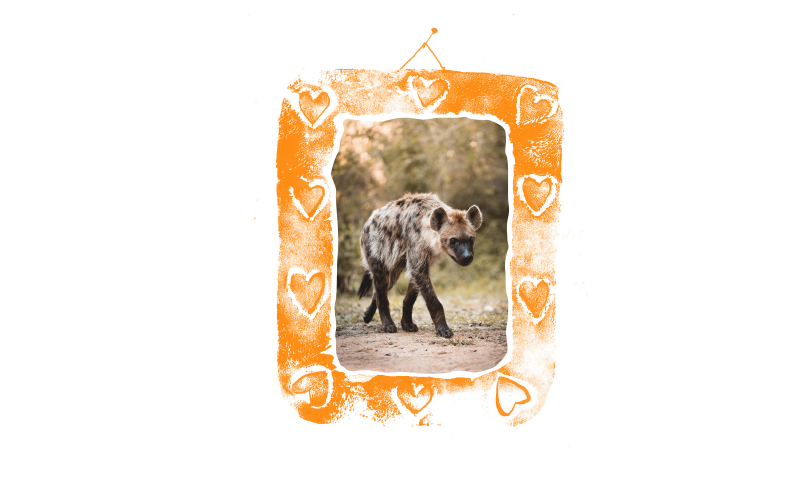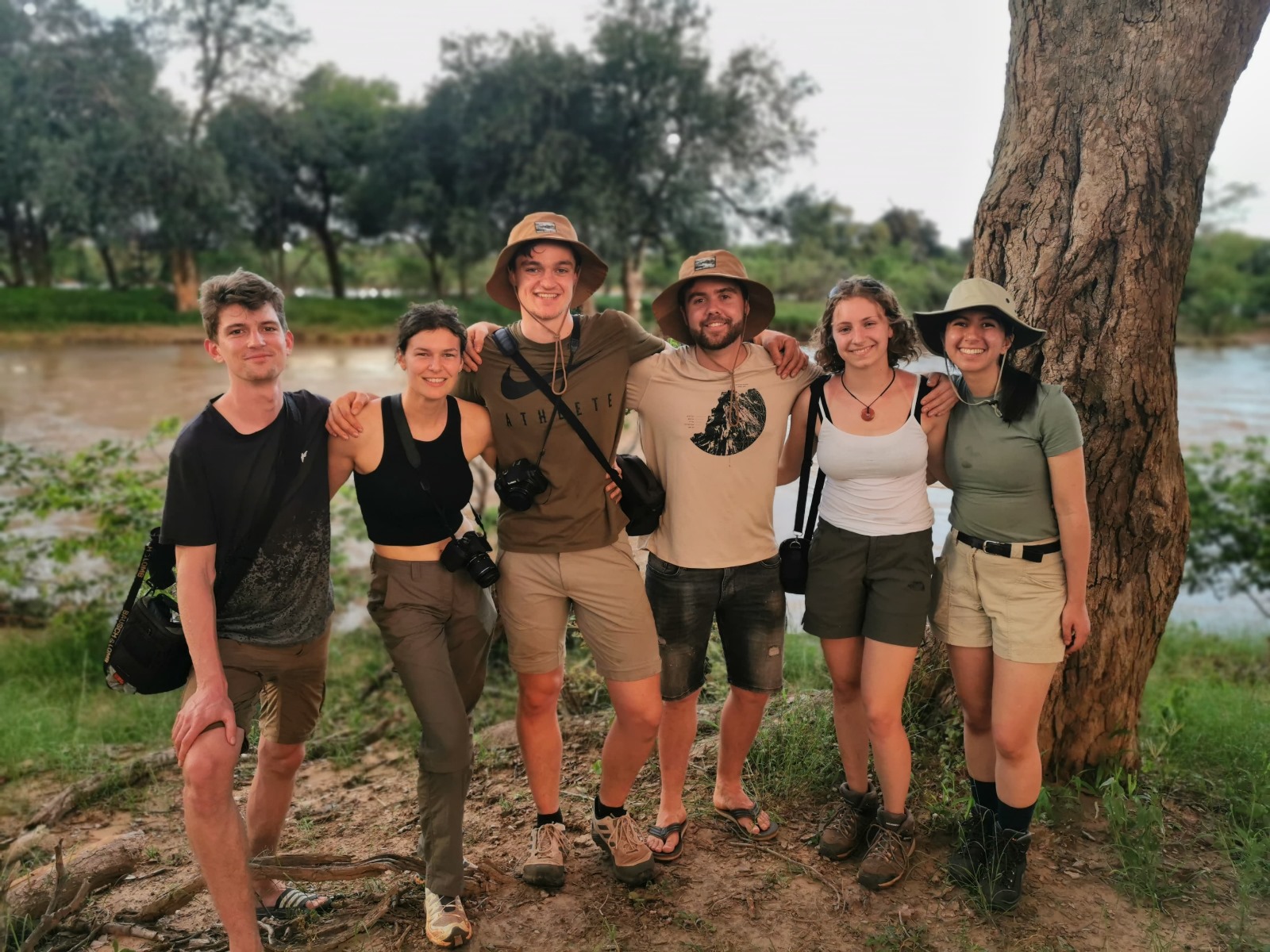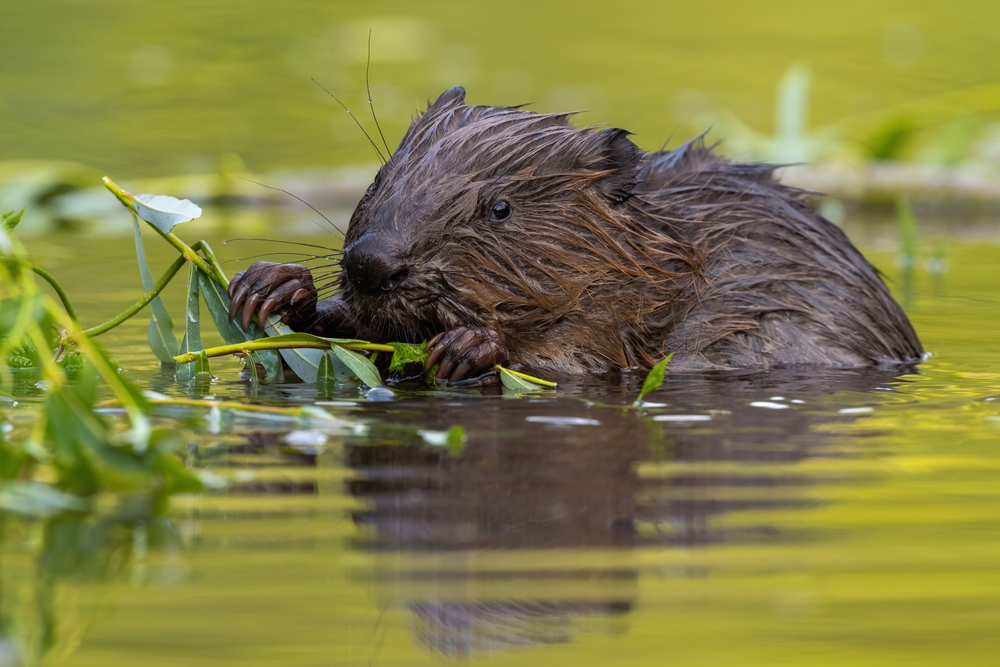Ugly animals are relegated to the sidelines. Unjustly so, says ecologist Francisca Virtuoso, who aims to correct this through her project Love the Ugly.
The hyena is not exactly Prince Charming, as most people see it, says PhD candidate Francisca Virtuoso. Sheoften has to defend her decision to do research on such an ugly animal to friends and family. ‘The hyena has negative connotations, even among ecologists,’ she says.
Personally, she does not see the hyena as ugly. Quite the opposite, in fact, and she finds it an extremely interesting animal as well. Read the first edition of the Love the Ugly blog (abridged version) here to find out more about this species. The series will be published on the Resource website every three weeks, following the same format in every edition: a few fun facts followed by a detailed explanation of the animal’s ecological function and the importance of protecting it.
Ugly but useful
That, obviously, is the ecologist’s ultimate objective. ‘People’s preferences for animals should not be driven by their looks, but by their contribution to the ecosystem.’ Even ugly animals have their place and function in this world. And the less lovable animals are still worthy of protection.
Which species will feature in Virtuoso’s blog? ‘It is not about my personal preferences. I am interested in seeing what others perceive as ugly and whether there is a pattern to be discovered. I have a list in mind, but I encourage everyone to submit candidates. I have a deep interest in which species people find the ugliest and why.’
So, what makes an animal ugly? People frequently interpret a lack of symmetry as ugliness. ‘The link between symmetry and beauty has been extensively studied in the domain of psychology,’ Virtuoso says.
Even ugly animals have their place and function
’Take, for example, the proboscis monkey with its balloon-shaped nose. Or the blobfish. These are species that lack facial symmetry.’
Another reason why a species might become unpopular, according to Virtuoso, is how it is portrayed by the media. ‘And I believe Disney has a big impact on which animals are considered beautiful or ugly. Look at what The Lion King has done to hyenas!’
The spotted hyena (Crocuta crocuta)
The giggly villain from The Lion King is often seen as greedy and stupid. But spotted hyenas are one of the most under-appreciated predators in the world.
To kill or not to kill
Despite what most people think, spotted hyenas do not live off of the scraps of other carnivores. They actually hunt a lot more than they scavenge. Spotted hyenas have a bite force almost double that of lions, their strongest competitor. This bite force comes in handy to crack bones and hooves, allowing them to access the nutrient-rich marrow that is inaccessible to most other predators. Working as a team, a group of hyenas can eat an entire antelope in less than half an hour.
Let’s talk about sex
Did you know that female hyenas have penises too? Actually, they’re known as pseudo-penises, as they are an elongated clitoris used for copulation, birth, urination, but also sociability – hyenas develop erections as part of social greeting ceremonies. This makes it very difficult to accurately distinguish males from females. The females have three times more testosterone in their body than the males. These high levels of testosterone explain why they are more aggressive and more muscular than their male counterparts.
Hyena social club
Hyenas are capable of complex problem solving and have superior social intelligence. They are highly sociable, living in clans of up to 80 individuals, with an extremely complex hierarchical structure. You will rarely see all members of a clan together, though. Spotted hyenas are often found alone or in small groups, and have complex communication strategies. The ‘laugh’ we all know is only one of more than 10 different calls, and actually means distress, not joy.
Why should I care about a world without hyenas?
Hyenas are not the most popular animals. From their evil laugh and ungraceful body structure they are everything but appealing. But there is much more to these spotted animals than meets the eye. Did you know that although they look more like some kind of big furry dog, they are actually more closely related to cats?
Spotted hyenas are adaptable to different environments and, at times, you can even find them in cities alongside humans. Recent research has shown the economic and health benefits these carnivores bring to communities. By consuming a lot of waste and removing carcasses, hyenas reduce the potential spread of diseases.
Alongside their role as environmental cleaners, they are also considered important cultural and spiritual symbols in some communities. In those cultures, they are not seen as the embodiment of ugliness, stupidity and excessiveness, but represent sacredness and fertility. And in certain cultures, they are even believed to have been the animal that brought the sun to the Earth. A world without hyenas would be a cold and dirty place.

 Hyenas have a positive impact on the economy and public health: by eating a lot of garbage and cleaning up carcasses, they reduce the chances of diseases spreading.
Illustration Shutterstock
Hyenas have a positive impact on the economy and public health: by eating a lot of garbage and cleaning up carcasses, they reduce the chances of diseases spreading.
Illustration Shutterstock


